Generate & Regenerate
These actions control how TestSprite creates and updates your test suite. Generate creates new tests for the first time, while Regenerate recreates existing tests from scratch when your application or requirements change significantly.Generate
Create tests for the first time based on your PRD and project.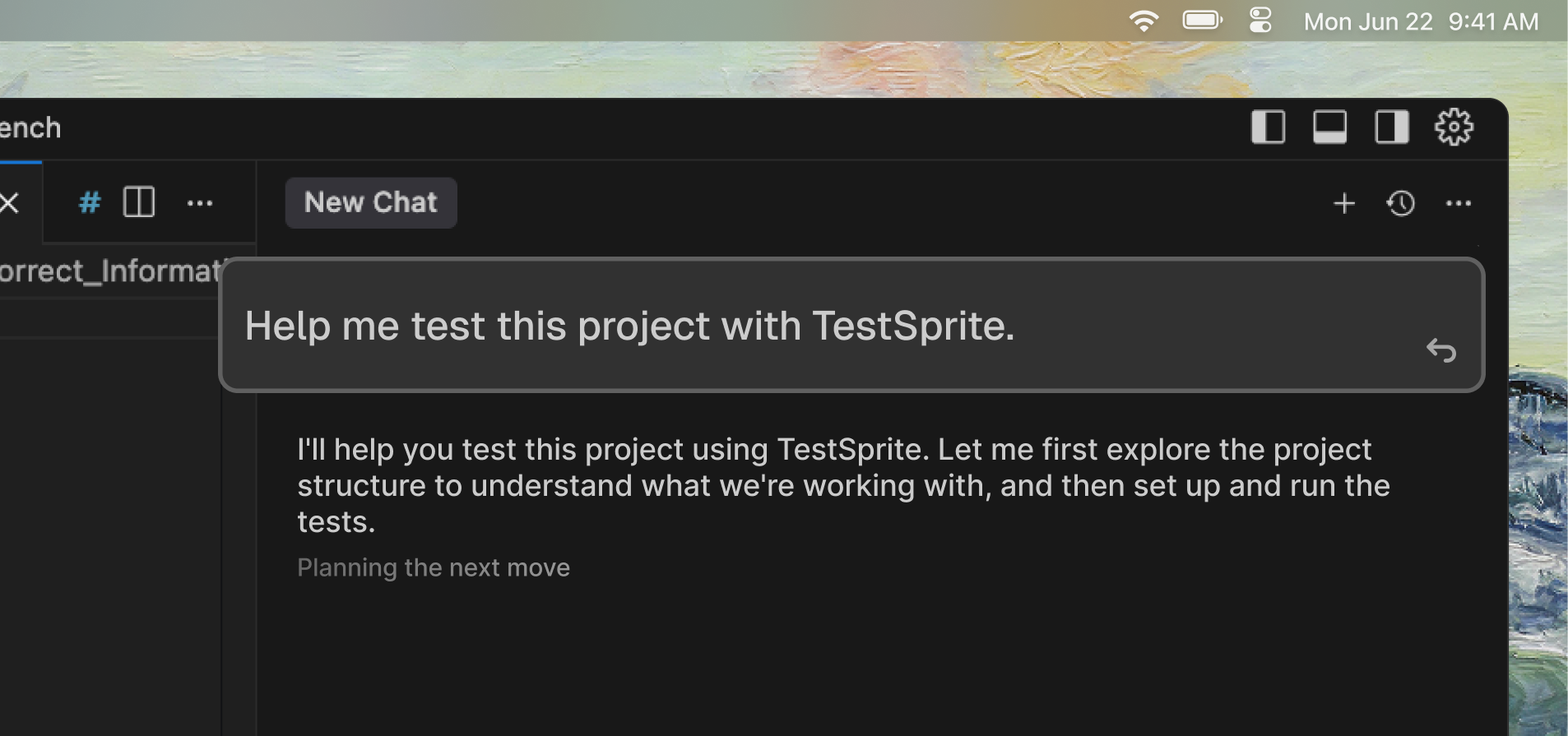
- Example prompt
- When to use
- What happens
Use this prompt to get started with testing your project:
Regenerate
Recreate tests from scratch based on updated PRD and code.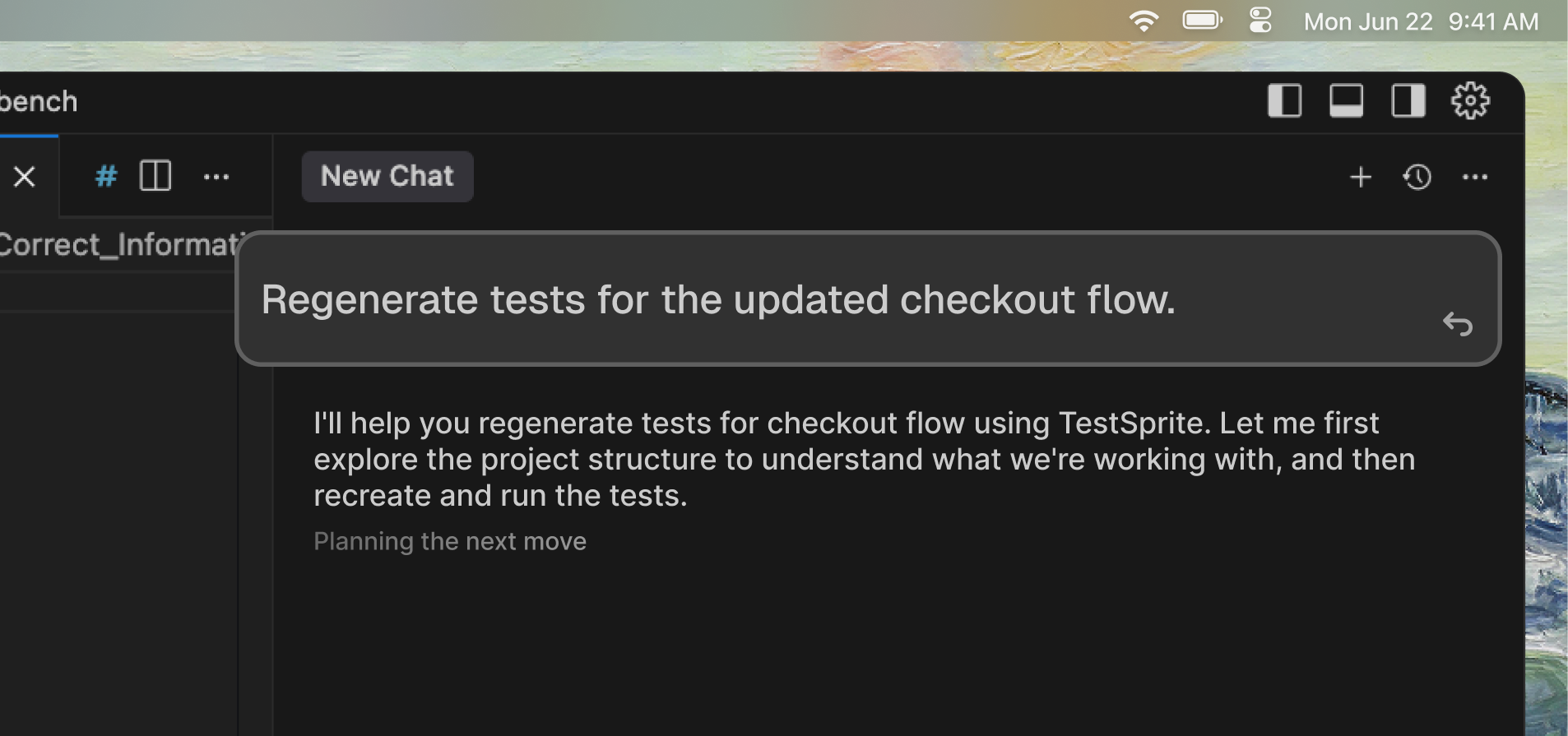
- Example prompt
- When to use
- What happens
Use this prompt to regenerate tests after significant changes:
Regenerate Tests
Learn more about how to regenerate tests from scratch
Run & Rerun
These actions control how TestSprite executes your tests. Run executes newly generated tests for the first time, while Rerun executes previously generated tests again without regenerating them.Run
Execute newly generated tests for the first time.
- When to use
- What happens
Use Run when executing tests for the first time:
- After generating tests
- Initial validation of your application
- First-time test execution
Rerun
Execute previously generated tests again without changing them.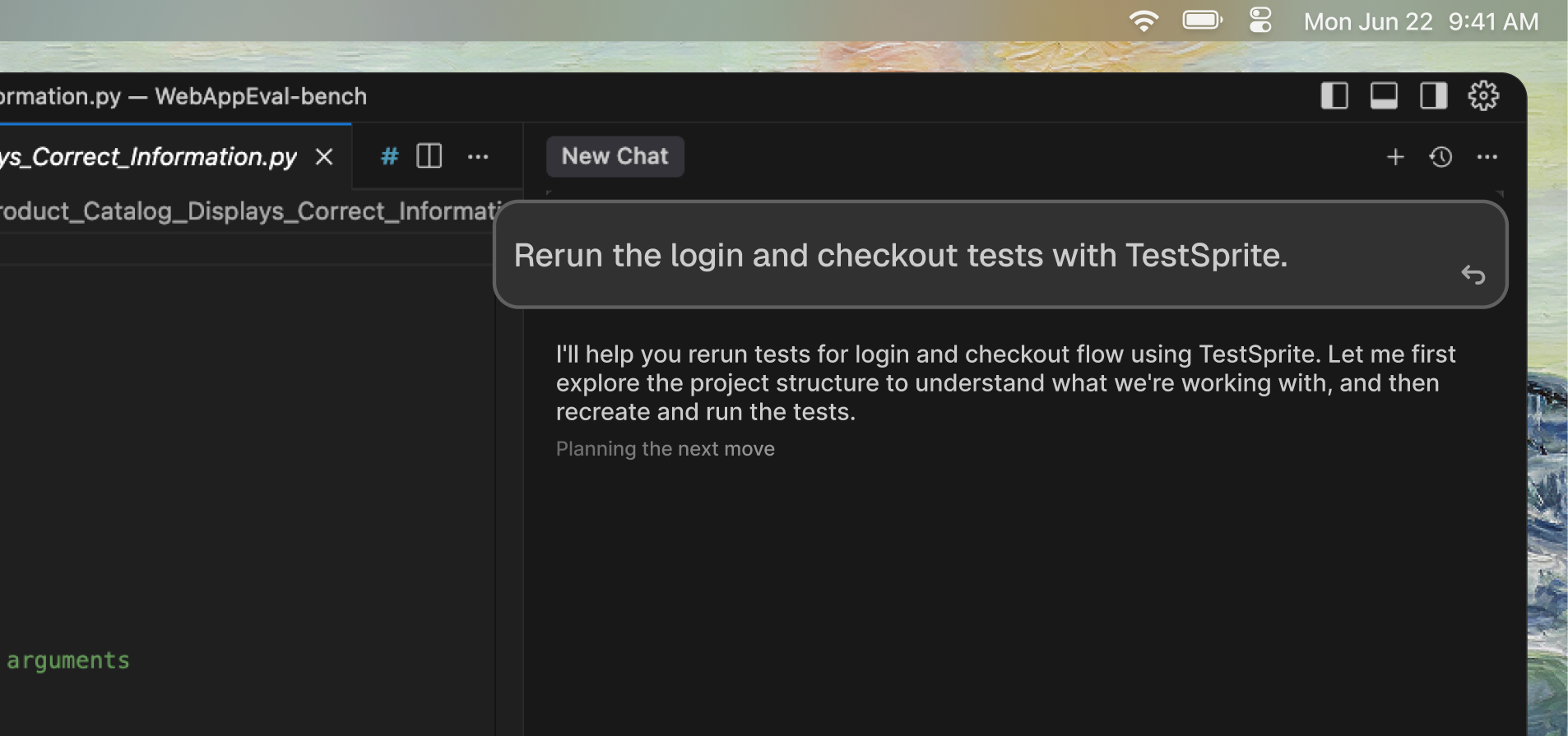
- Example prompt
- When to use
- What happens
Use this prompt to rerun existing tests:
Rerun Tests
Learn more about how to rerun existing tests
Healing
Automatic or semi-automatic fixes to brittle tests that fail due to non-functional changes (not real bugs), making tests robust without masking actual product issues.- Common healing scenarios
- How it works
- Example
Healing addresses these common test fragility issues:
- UI Selectors: Updates when element IDs/classes change (e.g.,
#login-btn→[data-testid="login"]) - Timing Issues: Adjusts waits for slow-loading components or animations
- Test Data: Updates fixtures when data schemas change
- Environment: Corrects port mismatches, missing credentials, or configuration issues
- API Contracts: Tightens schema assertions to match actual API responses
What Healing Is vs. What It’s Not
Understanding the difference between healing and masking bugs is crucial. Healing only fixes test fragility caused by non-functional changes, never real product issues.What Healing is Not
What Healing Is
Masking real product bugs
Making tests resilient to non-functional code changes
Making tests pass when they should fail
Reducing test maintenance busywork
Test Scope
Defines which parts of your codebase TestSprite will analyze and test.
Features
Codebase
Code Diff
What it tests
Tests the entire project
Tests only changed files/features (based on git diff)
Use cases
New projects, major releases, comprehensive audits
Feature branches, incremental development, quick validation
Speed
Takes longer
Fast feedback
Coverage
Full coverage
Recent changes only
Set the scope in the bootstrapping page when you call the
testsprite_bootstrap_tests tool. MCP Tools Reference
Learn more about TestSprite MCP tools and commands
PRD & Normalized PRD
TestSprite uses Product Requirements Documents (PRD) to understand your project and generate appropriate tests. While you can provide PRDs in any format, TestSprite converts them into a standardized Normalized PRD format for consistent test generation.PRD (Product Requirements Document)
Your original documentation describing what your product should do.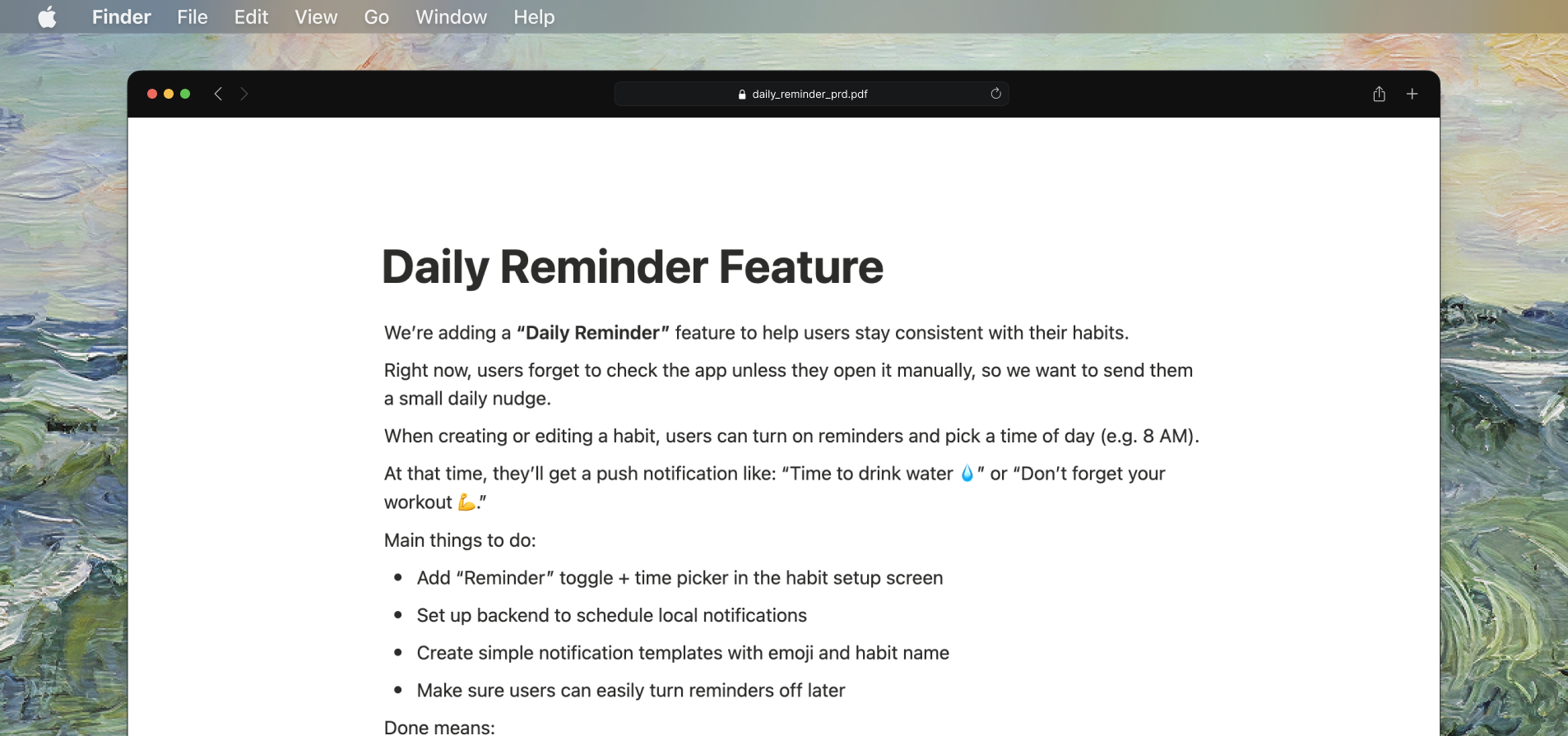
- Informal notes or README
- Formal specification documents
- Jira tickets or user stories
- Design docs or wikis
Normalized PRD
TestSprite’s standardized Product Requirements Document format that ensures consistent and smooth test generation regardless of your original PRD style.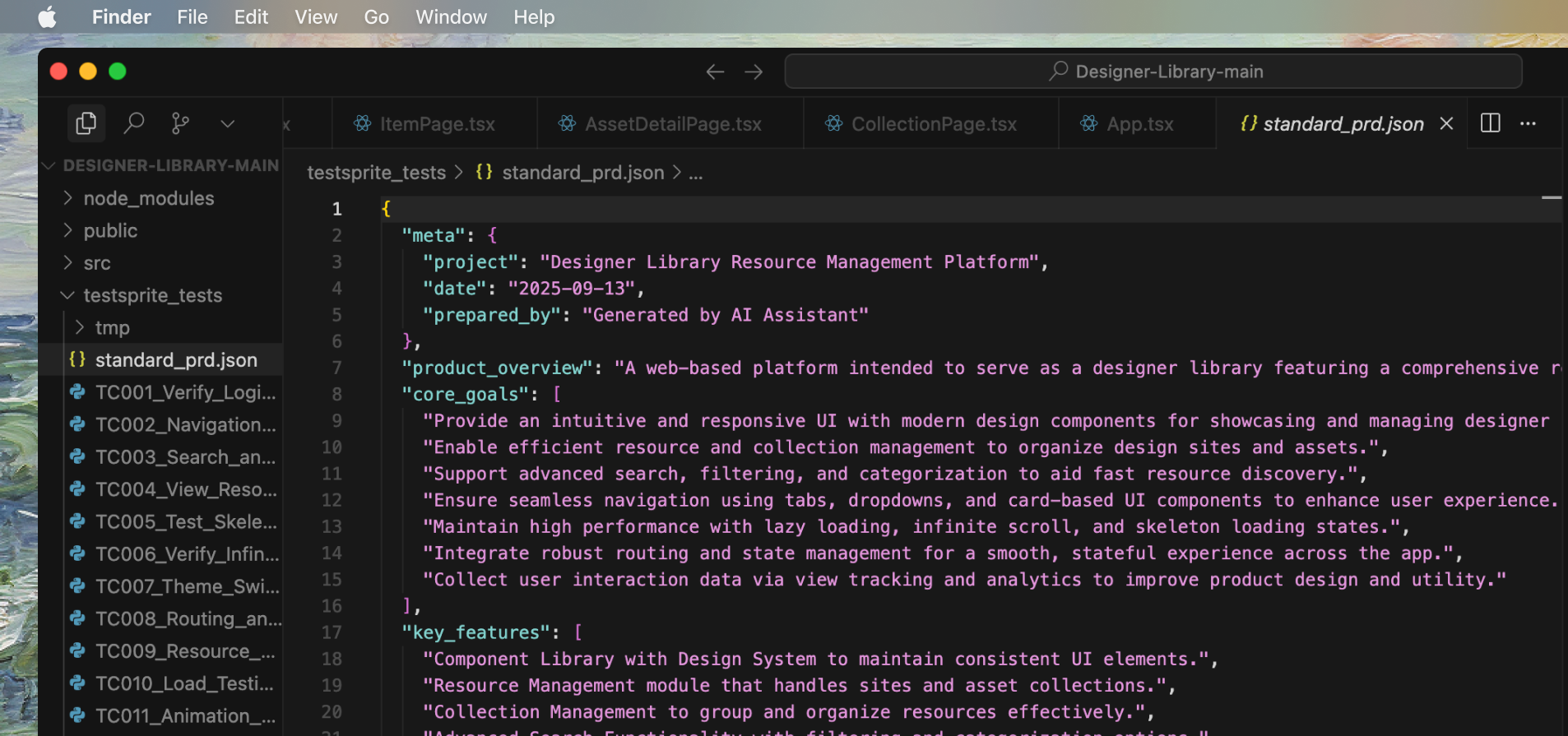
- What's in it
- Why it matters
The Normalized PRD contains structured information:
- Product overview and goals
- Core features with acceptance criteria
- User flows and validation rules
- Technical context from code analysis
Create Tests for New Projects
Learn how to create tests using PRD and Normalized PRD
Test Plan
A structured list of test cases generated by TestSprite based on your normalized PRD and code analysis.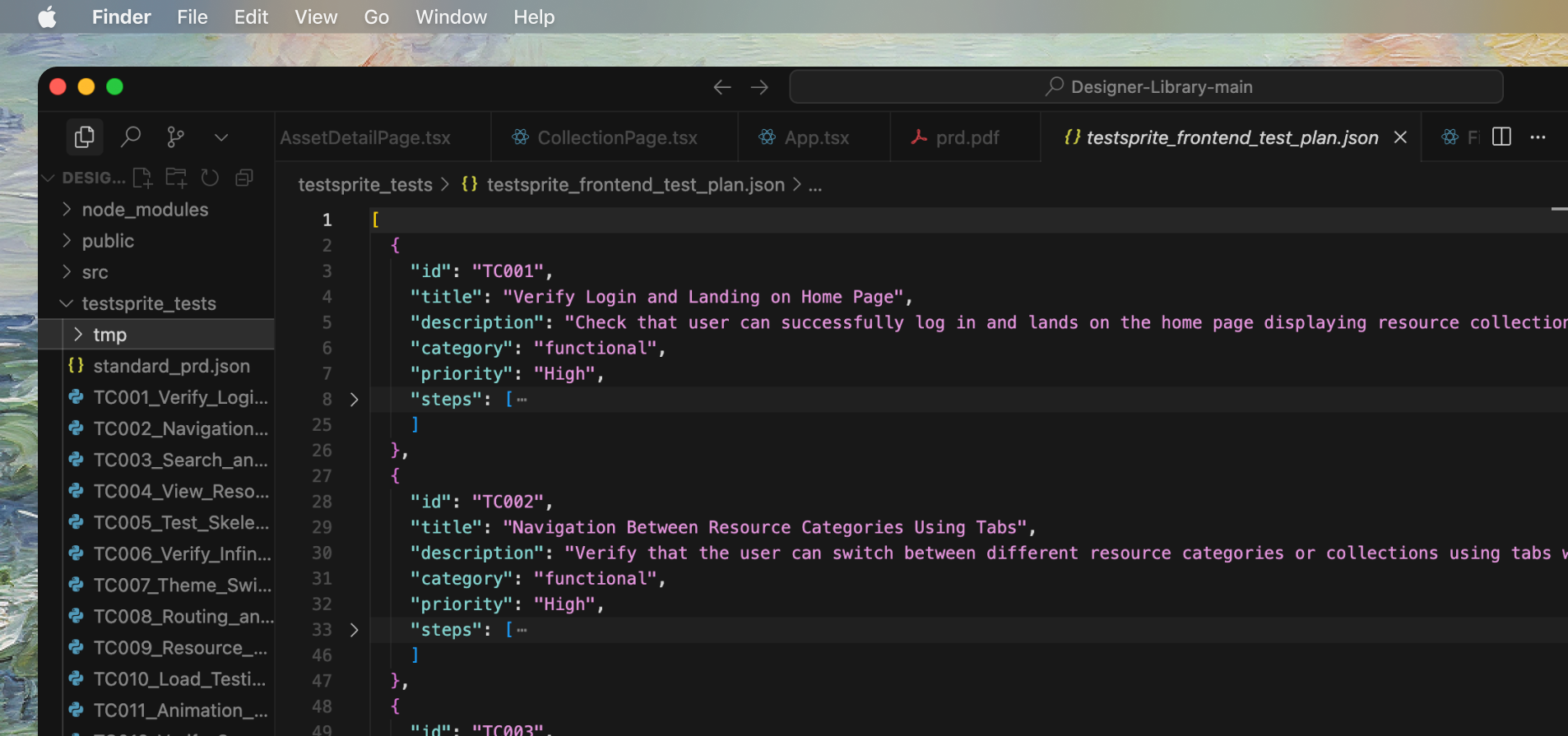
- Example
- Contains
Here’s an example of a test plan entry:
Plans are saved as
frontend_test_plan.json or backend_test_plan.json.